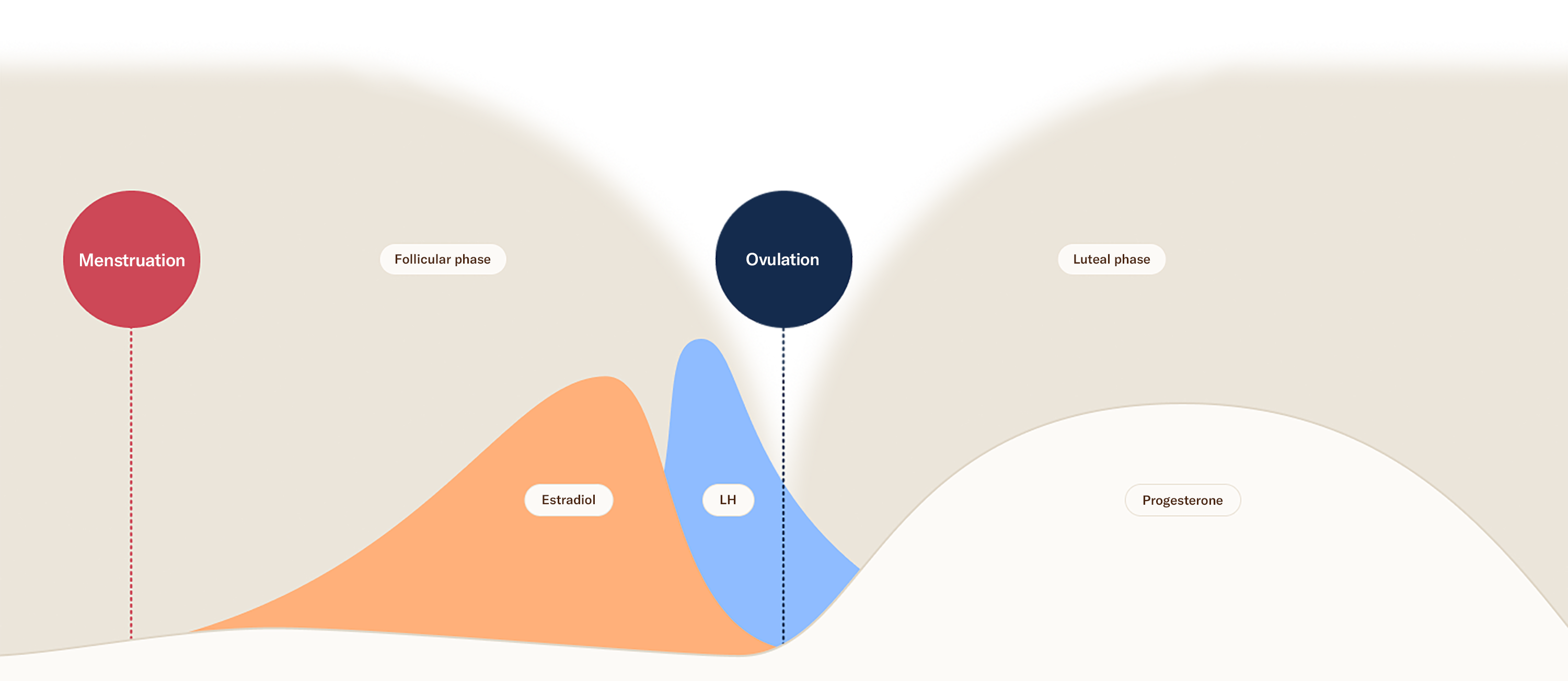Can you really measure fertility hormones in saliva? Oh yes!
Just a few drops of your saliva can reveal a lot about your reproductive health.
inne measures the fertility hormone progesterone in your saliva.
The inne minilab is the first at-home test in the world that can track changes in progesterone levels through saliva. It combines ultra-sensitive immunoassays with advanced image processing technology to detect even the tiniest shifts in hormone levels.
At the start of your cycle, your progesterone levels are low. Around ovulation, they rise and stay high during the luteal phase. The inne minilab picks up on this rise—confirming that ovulation has happened.

Reveal your hormone levels with the inne minilab.
Your cycle, your hormones.
The female menstrual cycle is regulated by a mix of different hormones. At the end of the follicular phase, estradiol briefly peaks, triggering the brain to release luteinizing hormone (LH). This rise in LH sets off a chain reaction that leads to the release of an egg from one of the maturing follicles in the ovary—a process called ovulation. After ovulation, the follicle transforms into what’s known as the corpus luteum, which is responsible for producing the hormone progesterone.
After that, your progesterone levels rise. They stay high through the middle of the luteal phase and then gradually drop again. By picking up on these changes in your progesterone levels, inne can identify your fertile days and ovulation—giving you a personalized fertility forecast.

Your fertile days
The inne minilab predicts your personal fertile window. It takes into account your estimated ovulation date, how long sperm can survive, and the unique ups and downs of your cycles.

Ovulation timing
Ovulation happens right between the follicular and luteal phases. inne’s algorithm predicts when it’s coming and confirms it by spotting a distinct rise in your progesterone levels.

Your progesterone trend
The inne minilab tracks your progesterone levels throughout your entire cycle and clearly shows the shift between your follicular and luteal phases. You get to watch your hormonal changes in real time—and understand what they actually mean.

Insights into your cycle
The inne app helps you understand what your daily hormone levels mean for your cycle and gives you extra insights that can help you make sense of your menstrual symptoms.
inne is sensitive
In other words: inne picks up even the tiniest changes in your saliva. With just one milliliter, the inne minilab can detect as little as 0.0000000001 grams of progesterone.
That might seem like a tiny amount, but it’s enough to trigger major changes in your body—like ovulation.
Only with the inne minilab can you do such precise measurements yourself. Until now, checking your hormone levels meant sending a saliva sample to a lab for a one-time result. With the inne minilab, you can easily and comfortably track your unique progesterone pattern throughout your entire cycle—right from home.
Learn from your hormones
Daily hormone readings aren’t like the smooth curves you see in textbook charts. They’re rarely that steady. Instead, your hormone levels show natural ups and downs.
The inne algorithm takes this natural variability into account by first figuring out your baseline progesterone level at the start of your cycle.
In every ovulatory cycle, your progesterone level rises clearly above this baseline once the luteal phase begins. The inne algorithm spots this rise and uses it as a reliable marker to confirm the shift from the follicular to the luteal phase. That shift is your ovulation.

The hormones in your saliva are a reflection of the hormones in your body.
When you think about hormone levels, saliva probably isn’t the first thing that comes to mind—it’s a pretty unusual “test sample.” At inne, we want to change that by making use of the simplicity of a daily saliva sample. No needles, no blood, no pee.
Even if you’re not thinking about the molecules in your saliva all the time—they’re still there!
Sex hormones in your saliva accurately reflect the hormone levels in your body. In other words: the hormone levels in your saliva stay in sync with those in your blood.

